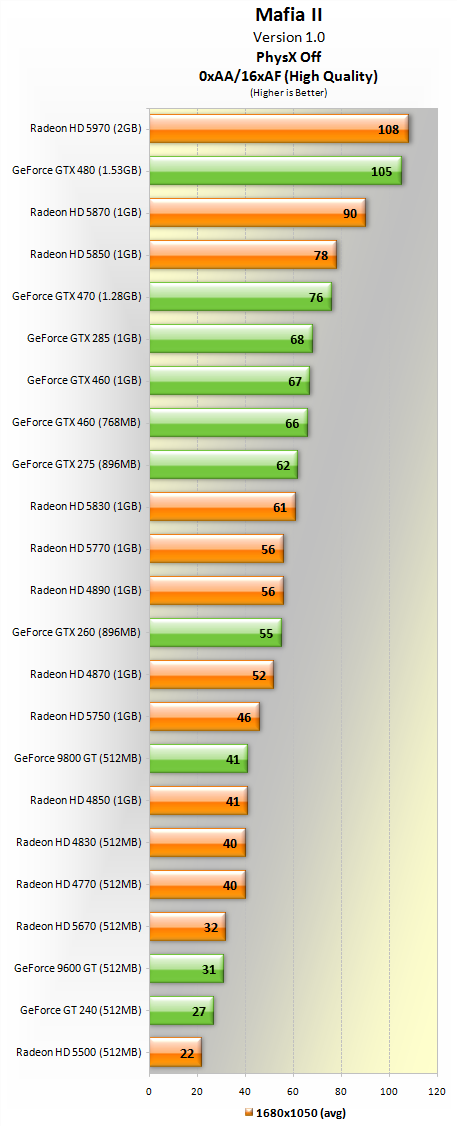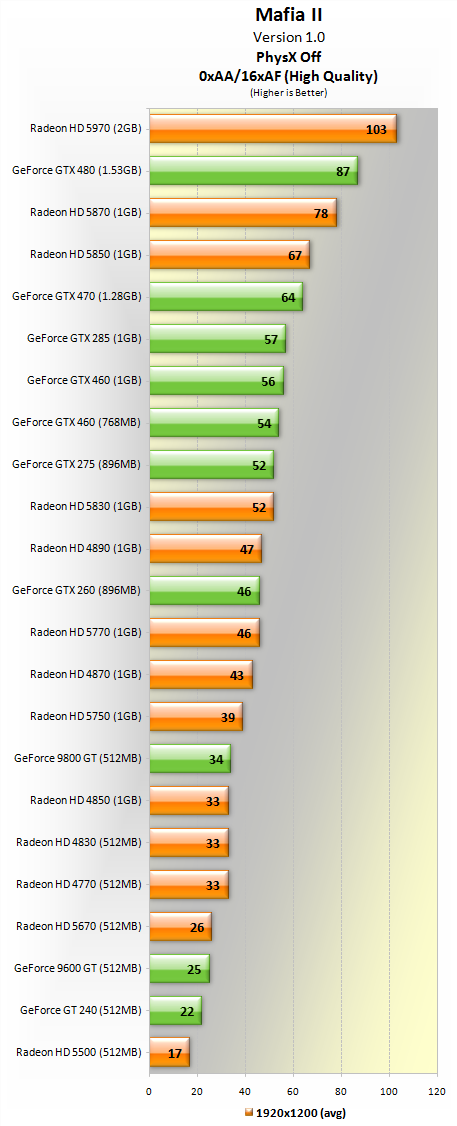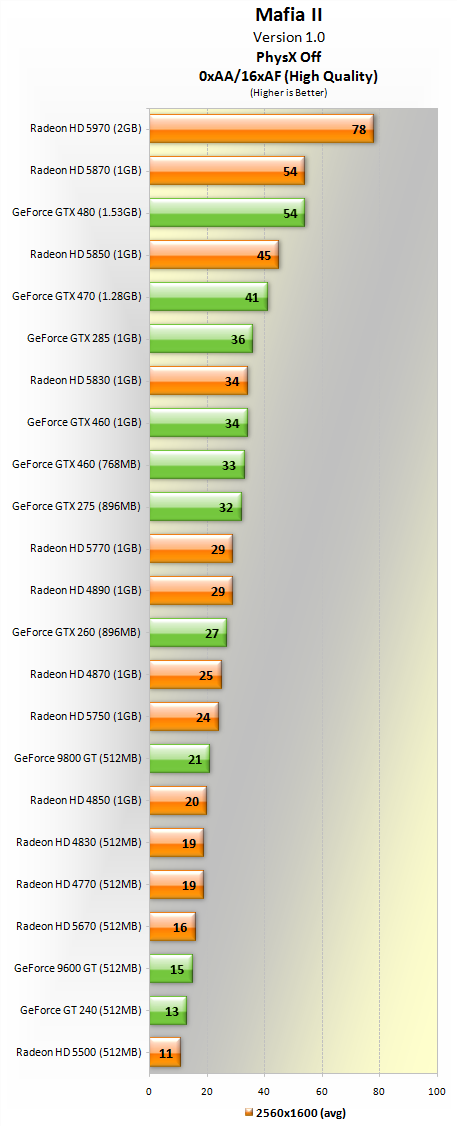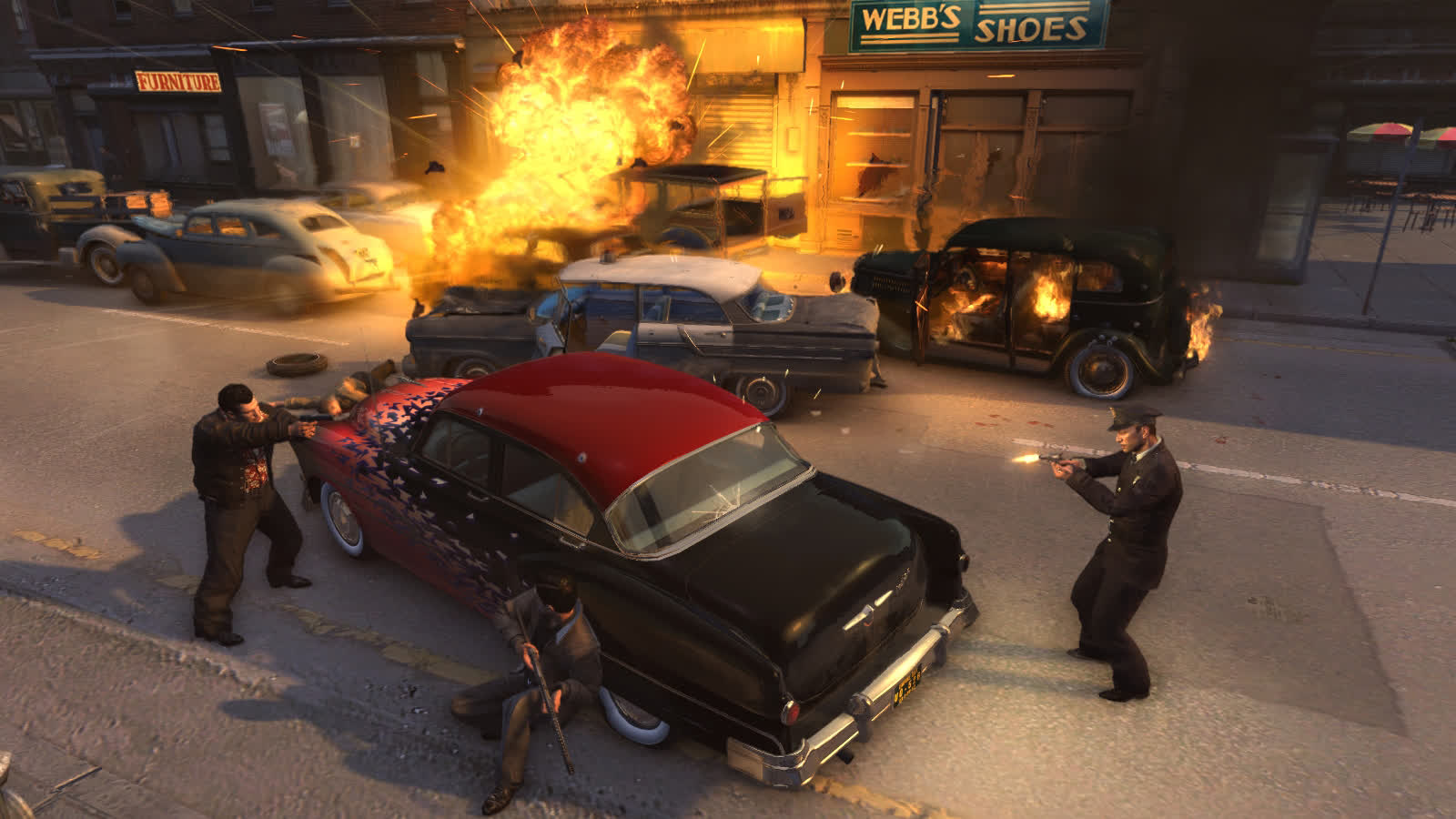Benchmarks: PhysX Off/AA Off
This first batch of results have been recorded at resolutions 1680x1050, 1920x1200 and 2560x1600. The best visual quality settings were used with the exception of anti-aliasing and PhysX which were both turned off.

At 1680x1050 the Radeon HD 5970 was the fastest single graphics card we tested delivering 108fps, however it was closely followed by the GeForce GTX 480 which produced an impressive 105fps. Given that an average of 30fps is required to play Mafia II these high-end cards are well in the clear.
The Radeon HD 5870 was 14% slower than the GeForce GTX 480 with an average of 90fps. The Radeon HD 5850 managed 78fps which made it 3% faster than the GeForce GTX 470 which rendered 76fps.
Nvidia's past flagship single GPU graphics card is also seen performing very well as the GeForce GTX 285 spat out an average of 68fps. The current value king, the new GeForce GTX 460 averaged 67fps (1GB) and 66fps (768MB).
Jumping down to the bottom end of the graph we see that budget graphics cards such as the Radeon HD 5500 and GeForce GT 240 struggle using the high quality settings. The GeForce 9600 GT averaged 31fps and the Radeon HD 5670 managed 32fps. Both are borderline playable so the chances of using PhysX or anti-aliasing with these cards is remote.
Previous generation mid-range graphics cards such as the GeForce 9800 GT, Radeon HD 4850, 4830 and 4770 all performed quite well, delivering an average of 40fps.

Increasing the resolution to 1920x1200 did little to hurt the high-end graphics cards. The Radeon HD 5970 was still lightning fast with an average of 103fps, the GeForce GTX 480 averaged 87fps followed by the Radeon HD 5870 with 78fps.
The Radeon HD 5850 was found leading the way for the current generation mid-range graphics cards with 67fps, making it slightly faster than the GeForce GTX 470 which produced a frame rate of 64fps. From the Radeon HD 5830 through to the GeForce GTX 285 we saw the average frame rate exceed 50fps, which is great to see given a number of $200 graphics cards were featured here.
The Radeon HD 5670 was found suffering at 1920x1200 delivering just 26fps, while the GeForce 9600 GT provided just 25fps, we did not find either card acceptable at this resolution. The Radeon HD 4770, 4830 and 4850 all scraped in with 33fps each, while the GeForce 9800 GT was only slightly better with 34fps.

Now at the more extreme 2560x1600 resolution we find that even mid-range graphics cards start to feel the pressure.
High-end products like the Radeon HD 5970 have no trouble delivering very playable performance. The Radeon HD 5870 and GeForce GTX 480 met each other at 54fps, while the Radeon HD 5850 still lead the GeForce GTX 470, this time by 4fps.
The GeForce GTX 285 averaged 36fps while the Radeon HD 5830 did quite well matching the GeForce GTX 460 (1GB) card. The 1GB version of the GeForce GTX 460 was still just a single frame faster than the 768MB version despite the extreme resolution.
The Radeon HD 5770 averaged just 29fps, as did the Radeon HD 4890. The GeForce GTX 260 was even slower with 27fps and the Radeon HD 4870 averaged 25fps. Below the Radeon HD 4870 were another nine graphics cards, all of which didn't make the cut.
